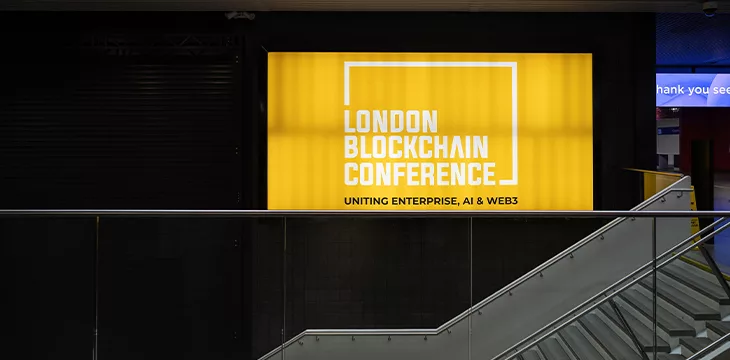|
Getting your Trinity Audio player ready...
|
Complete regulatory compliance is necessary for the industry to attract high-net-worth investors from the middle market, according to a Thursday presentation by the Head of Trade at blockchain payment service Coinify.
Speaking on the final day of the London Blockchain Conference 2024, Andrew Bellingham, Head of Trade at Coinify, outlined what the industry needs to do to attract more high-net-worth individuals (HNWIs).
Coinify is a leading provider of blockchain payment solutions. According to its website, its mission is “to facilitate global expansion and adoption of virtual currencies in a secure, compliant, and regulated manner.”
Addressing a crowded ‘spotlight’ stage in the main hall of LBC 2024, Bellingham outlined the company’s take on the current state of the digital asset market:
“Retail traders have traditionally driven the market… not until we saw the ETFs did we really see the institutional inventors. When it comes to high-net-worth inventors, all they know is they want exposure to the asset class.”
Regarding the geographic origins, age range, and preferred assets of this “often elusive market segment,” Bellingham revealed—based on Coinify’s data and research—that the average age is 52, and 46% come from the EU, while 36% are from North America.
“North Americans tend be a bit more ‘risk-on’ compared to the rest of the world,” he explained.
He went on to say that, in general, “these are individuals disenfranchised with the current financial institutions,” and “they are often liquidating other assts to gain exposure… a lot of the time its property or equities.”
Another characteristic this elusive and valuable investor group share is that often “non-crypto native,” meaning they’re investors that had made, or inherited, their wealth outside of the digital asset space. As such, they are “often overwhelmed by the asset class,” and getting to grips with the anti-money laundering requirement and fees unique to digital assets can prove an obstacle to investment.
“Essentially they don’t know where to start, it’s important we teach them how to navigate,” said Bellingham. “It’s important we have an ecosystem that’s available to everyone and we’re not gatekeeping it, especially for these newcomers.”
He also delved into the motivations and investment decisions driving these so-called “non-crypto native” HNWIs to enter the digital asset space, how their trading behavior differs from that of their retail and institutional counterparts, and their favored investments.
BTC is the most popular coin amongst these investors, “the sound money play,” said Bellingham. In second place are the market’s most popular stablecoins, which these new entrants use as “dry powder” to get into the market.
He also noted that, “BSV is very popular amongst HNWIs, they’re not necessary savvy about the difference between BTC and BSV, but we’re seeing a lot of interest.”
After establishing who they are and what they’re interested in, Bellingham outlined what the digital asset space can do to attract this valuable crowd, some of whom were surely in attendance at the LBC 2024.
The industry must adapt to its “unique service requirements,” including discretion considerations, hands-on consultancy, and compliance.
“They need transparent pricing, they want to be able to break down the cost before they make a trade, they are keen on self-custody and they want to do it all by the book, with full regulatory compliance,” explained Bellingham.
This latter point, he suggested, is why they often go with companies like Coinify, based in jurisdictions with stringent regulatory requirements like Denmark”—where the company is based.
However, Bellingham pointed out that there’s often problems that come with various routes into the market. For example, centralized exchanges may be good for retail investors, but for HNWIs making large trades, they may not like the fee structure, the custody of coins, and may just generally not trust them—especially considering the bad press around exchanges such as Coinbase (NASDAQ: COIN) and Binance.
This, said Bellingham, is again where companies like Coinify come into play. Servicing HNWIs by catering to their specific needs and concerns around “transparency” and “self-custody.”
Issues with routes aside, Bellingham was optimistic about this elusive investor class, noting that it was surprising how quickly these “non-crypto native” HNWIs become comfortable with making multiple trades in the space.
“When it comes to returning clients… we see that the majority come back for a second trade.” What this means, suggested Bellingham, is that they haven’t finished constructing their portfolio after the first trade.
He rounded off his talk by saying that the ultimate goal of Coinfy and the work it’s doing to attract investors, such as non-digital asset native HNWIs, is to “support the adoption” of blockchain technology—an aim many of the assembled LBC delegates likely share.
Watch: It’s time for regulation to enable blockchain growth

 09-18-2025
09-18-2025 





